We are recognised as authorities in our specialised fields. We publish newsletters with informed opinions that are free for you to subscribe to.
On the Myanmar border
Humphrey Hart, a senior analyst in our Value Added Services team, spent more time than he expected on the Thai border in January…
Tomorrow, we were going to cross the border into Myanmar. We were having dinner with Doctor Naing and Aunty Pat, who we knew from their social work with Burmese refugees in New Zealand.
We had seen a lot of hardship in the last couple of days. “We want to help”, said Myint. “I don’t know how, but I’m sure there’s some way to help. What exactly do you do here, by the way?”
“Why don’t you stay another night?” Asked Dr Naing. “Visit the school and the clinic with Aunty Pat, and just listen. Maybe then you will see how you might be able to help.”
Early the following morning, we arrived at the school. Aunty Pat was driving. She explained that the school was for Burmese migrants, which is technically illegal. But the children are here, in Thailand, and they need to go to school. What other option is there?
The school was dusty and barren and hot. There was no grass. The kids laughing and talking and playing, eating their lunch, and just being kids. Some looked at us with curiosity, I don’t think many foreigners visit the school.
“There’s not a lot of opportunity for them once they finish school”, said Aunty Pat. “If their English is good, they can sit the GED exam. Some of them can, but most can’t. If they pass, then they need to look for scholarships. There are some scholarships, but it’s not easy.”
She stopped a young lady walking past and introduced us. She was maybe 19, she had graduated from the school a couple of years ago. What was she doing now? Teaching at the school. She was waiting to see if she was accepted for a scholarship to a university in Thailand.
“What about New Zealand?” We asked, explaining that we were happy to help her look for scholarships.
“It’s too far, I need to be near my family.” She explained.
Later, as we were driving from the school to the clinic, we passed what seemed like a truck graveyard.
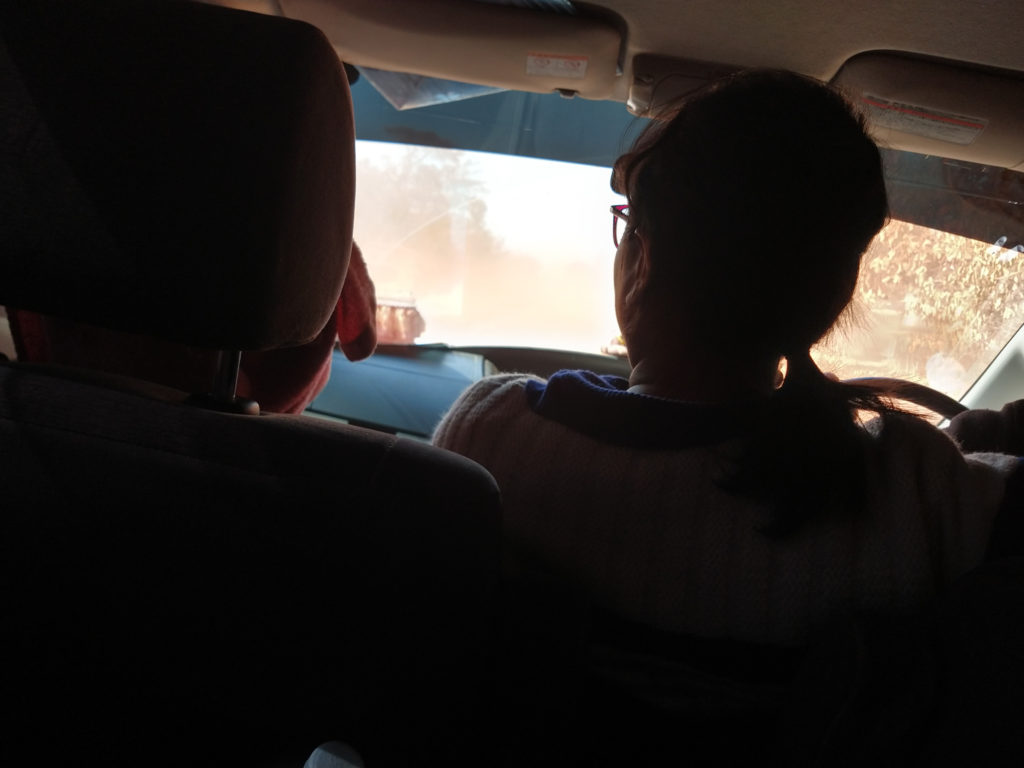
“They’re waiting to be X-Rayed as they cross the border”, Aunty Pat explained. I wondered what the X-Rays were looking for.
We talked some more, and the conversation turned to why there was such thick pollution in such a small town.
“The Thai farmers burn the rice fields each year to clear them for next year’s crop.” She said
“The fields by the road aren’t rice though, it’s all sugarcane”
“They can’t grow rice here anymore”, she said. “Cadmium from the mine has contaminated most of the fields. So, the farmers shift to grow sugarcane for ethanol production, it is challenge to grow anything for food now.”
Soon we arrived at the clinic. There was a woman with three children. She spoke to the woman in Thai for a moment and gestured down the road with her hand. We drove forward.
“One way you could help is with the children”, she said. “There have been funding cuts so there is nobody to babysit the children of patients, or staff, so it’s very hard.”
We went inside one of the small buildings, which was her office. There was soap and re-usable sanitary pads on a shelf in the corner.
“That’s our new social enterprise project”, she explained. “We’re trying it out as part of our financial sustainability. It also gives the opportunity for people to work and get trained in new skills.”
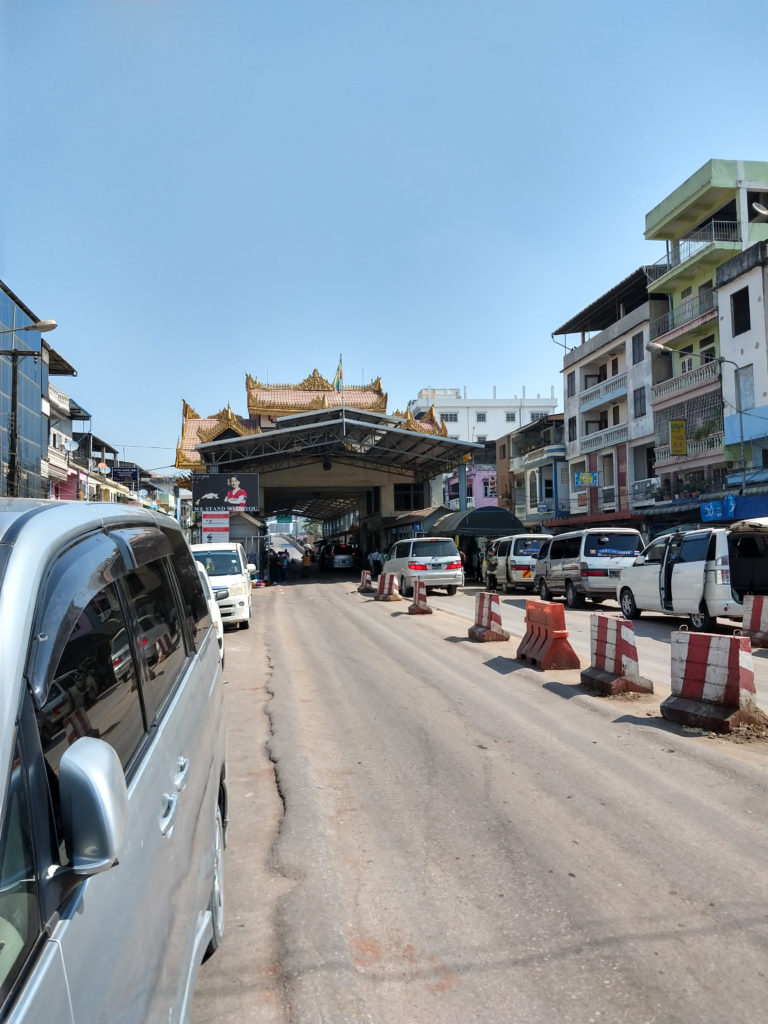
“At the moment we aren’t making our own designs, they’re just simple ideas that we’ve seen before. One day we will do our own designs, but for now we’re just trying it out. We grow mushrooms too; we have a mushroom farm.”
We talked more and she showed us around. Some of the other office space was taken up by other charities.
We started walking around the clinic complex. “That’s the cold room”, she explained. “That’s where the bodies stay until they’re taken away to be buried or cremated.”
A group was folding down a stretcher outside the door.
“Sometimes patients are sent here just to die. Many people can’t afford to manage the body and funeral. It is quite costly for many patients’ relatives, so they choose to come here.”
We went past the maternity ward, as well as a few others. There was a Tuberculosis ward and an HIV testing unit.
Somebody with a blood-soaked bandage on his head was being helped by four others into an operating room. He seemed unsteady on his feet.
We left the clinic to visit the social enterprise, where the soap and reusable sanitary pads are made, and the mushroom farm.
“It used to be a boarding house for migrant children”, she said, “but it’s abandoned now.”
The place was dusty and barren. There were some kids fighting, maybe three to six years old. Aunty Pat asked if they’d showered recently, and they said no.
“Their mum works for our mushroom farm She is single mum with six children, and she’s still very young”, she explained, so we let her live here with three of her young kids.
We went into the sewing room and talked to the seamstresses. They had made re-usable wine bottle bags, and we bought one.
After a while, we went to leave. “Do you want to go to the border?” Aunty Pat asked.
We had been to the border the day before already. The bridge across is symbolic. Not just because it’s a symbol of the relationship between the two countries and aptly named the ‘Friendship Bridge’. It’s also symbolic in the sense that the border doesn’t seem to serve much purpose. The river isn’t wide at this time of year, only about 10 or 20 meters across. Migrants seem to take small boats across as they please.
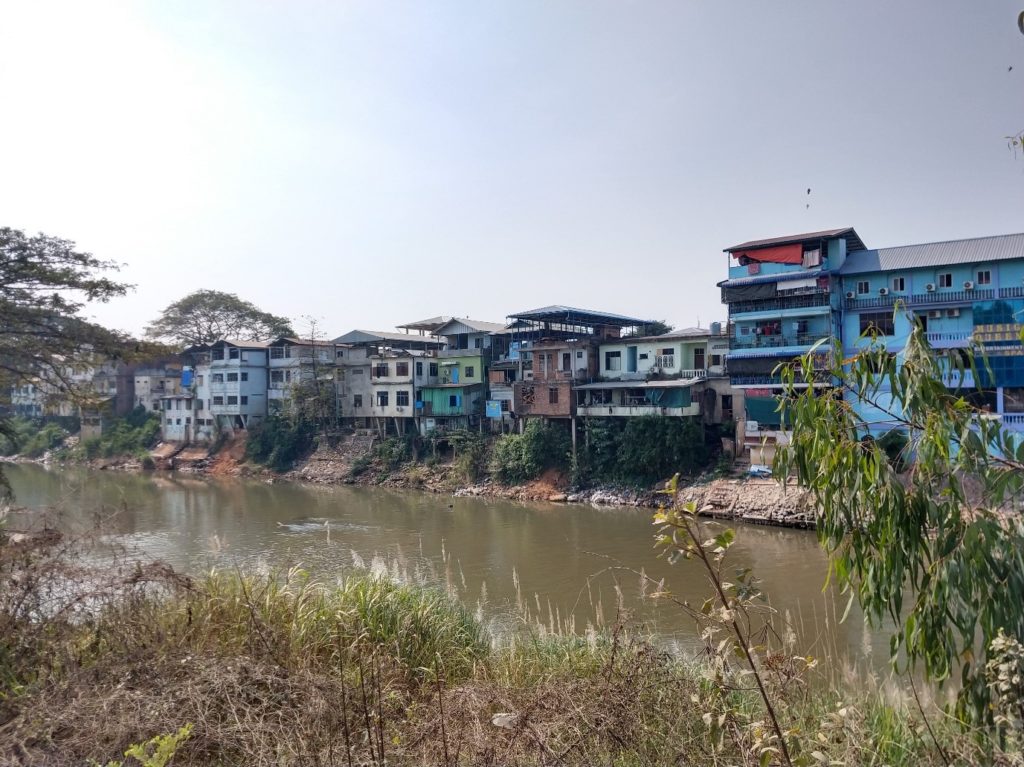
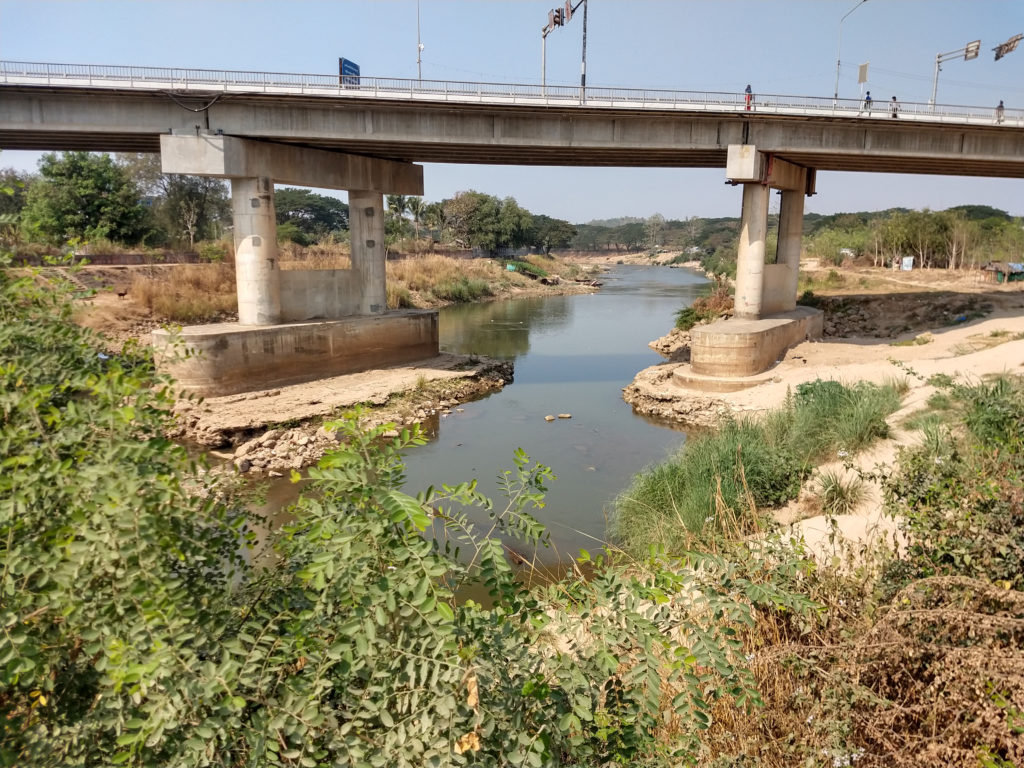
If you go a little further down the river, the Myanmar side starts looking like a shanty town, with apartments on stilts and garbage strewn down the bank and into the river.
Further still, the shanty buildings make way for casinos.
“Gambling is illegal in each country, but that area of the border is under the control of the “Border Guard Force”. The governments from each side don’t patrol, so there are casinos and restaurants. There’s a duty free, too.”
There’s a small boat that goes back and forward between the casino and the Thai side, so it takes less than a minute to unofficially cross from Thailand to Myanmar.
“I don’t think they’ll let him on, they might get in trouble” she said as she gestured towards me. “Should we try?”
We hopped on the boat and sat down, and nobody said anything, so a minute later we were unofficially in Myanmar, exploring.
On the boat back, we saw someone being carried up the bank into Thailand on a makeshift stretcher.
“Probably to our clinic”, said Aunty Pat.
Dr Naing and Aunty Pat are not related to us, the term ‘Aunty’ is a term of respect in Myanmar and Thailand. We have known them for years because of their involvement in settlement and integration of the Myanmar refugee community in New Zealand. They are doing incredible work for the Myanmar migrant population in Thailand, and across the border in Myanmar where people face incredible hardship.
The operation running the school and clinic are not a registered New Zealand charity, but do receive funding from registered charities. If you are interested in donating directly to the operation on a non-tax-deductible basis, or are interested in helping in other ways, please get in touch and we’ll be happy to facilitate.
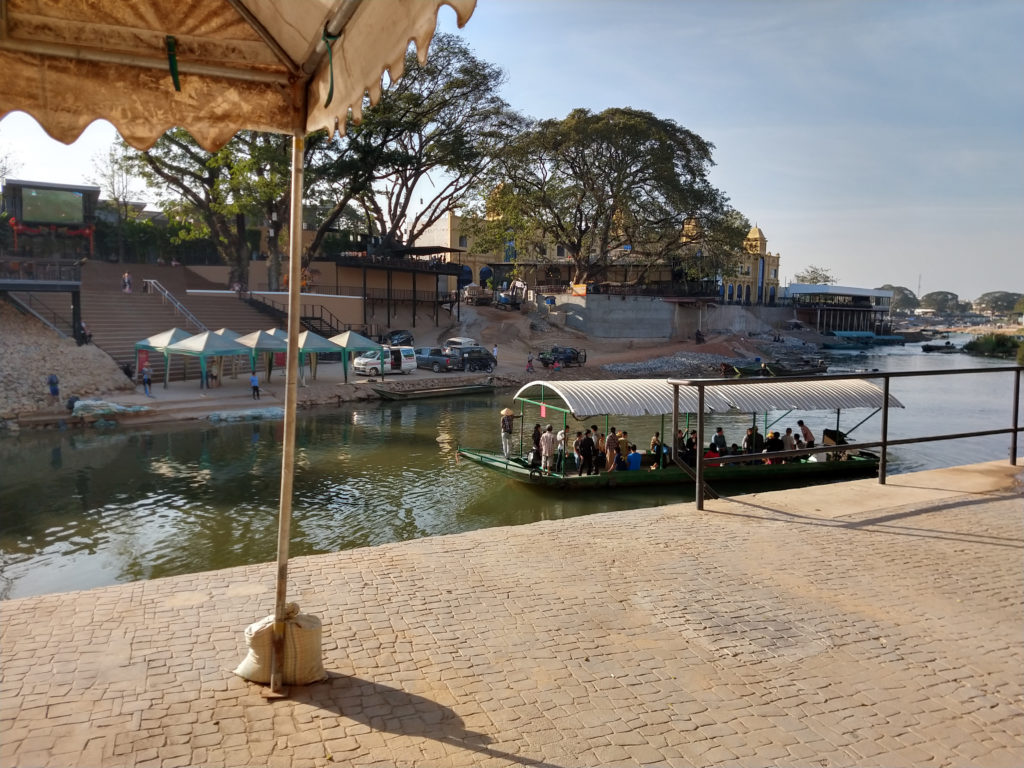
If you don’t know where to begin, want to talk through something, or have a specific question but are not sure who to address it to, fill in the form, and we’ll get back to you within two working days.
Find out about our team
Look through our articles
Read more about our history
Business Advisory Services
Tax Specialist Services
Value Added Services
Get in touch with our team
Want to ask a question?
What are your opening hours?
AML & CFT Act in New Zealand
Events with Gilligan Sheppard
Accounting software options
Where are you located?
Events

